The Astrological Spread
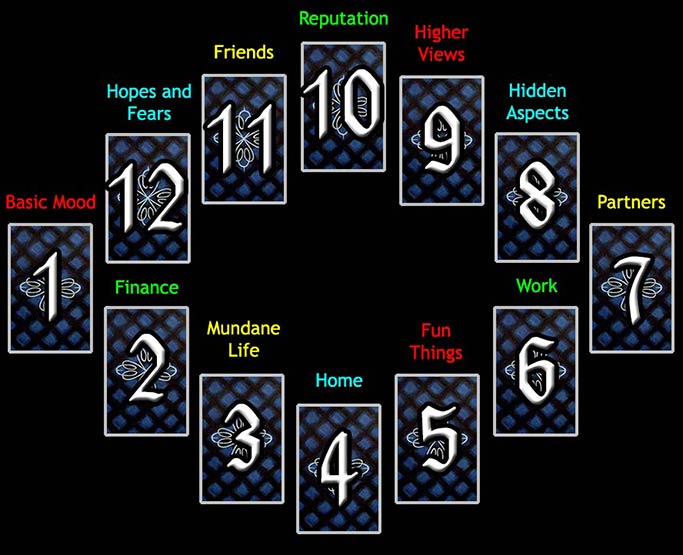
Difficulty: Complicated
The Astrological Tarot Spread is based upon houses of astrology. This complicated spread takes several steps to understand.
The first step is to interpret the tarot card for each individual position in the spread.
The second step involves further examination of the main axes. Positions 1 & 7 show the relationship theme, #1 representing the reader, #7 their partner. Positions 4 & 10 indicate motion. #4 indicates where the reader is now, and #10 suggests what they are moving towards.
The third step involves breaking down the chart into triads according to their house elements.
Positions 1, 5, & 9 represent the Fire triad, symbolising temperament and personal development.
Positions 2, 6, & 10 represent the Earth triad, concerned with materialism, money, and work.
Positions 3, 7, & 11 represent the Air triad, which has to do with thoughts, ideas, and connections with other people.
Positions 4, 8, & 12 represent the Water triad, the realm of emotions, moods, intuition, and yearnings.
Further, other patterns and correlations between certain numbers can be noted. Certain numbers such as the set of 5, 7, & 8 often speak about a particular theme.
Your Astrological Reading
| 10 | ||||||
| 11 | 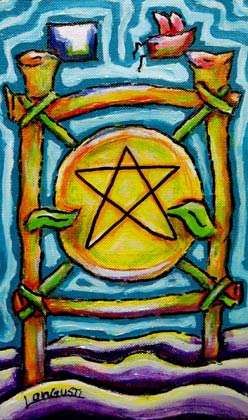 |
9 | ||||
| 12 | 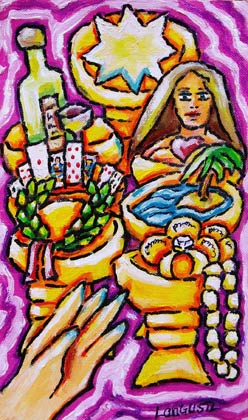 |
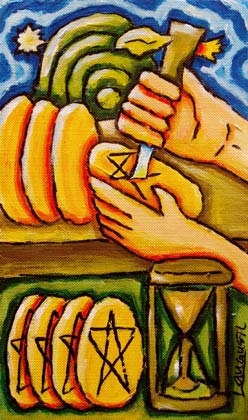 |
8 | |||
| 1 |  |
 |
7 | |||
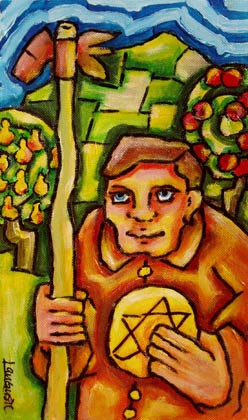 |
2 | 6 | 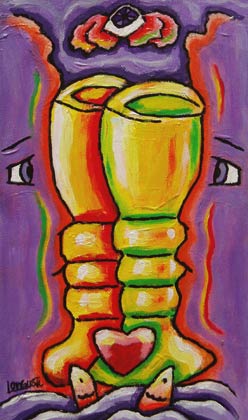 |
|||
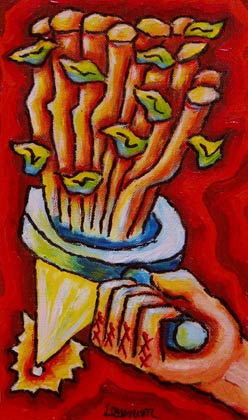 |
3 | 5 |  |
|||
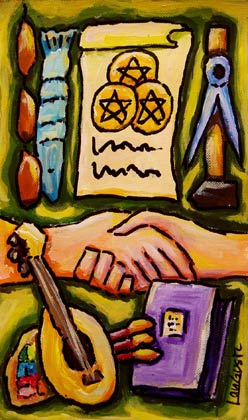 |
4 | 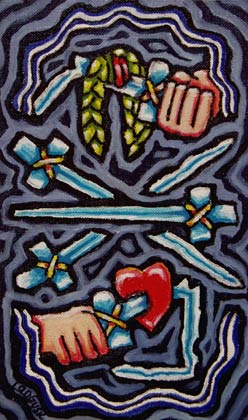 |
||||
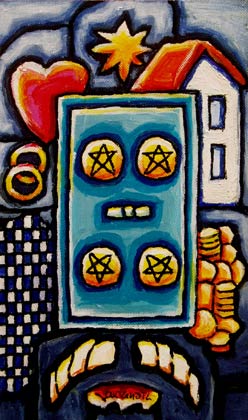 |
1: Basic Mood

The fields and fruit trees are well kept and managed. Everything seems to be in order. The harvest is certain to turn out well. Apart from a few gold buttons, the prince does without any jewellery. His facial expression mirrors his pride in his performance, but at the same time a certain submissiveness.
2: Finance

The powerful energy in this situation is emphasised by the intensive colour red in the background. The wands are moving onwards through a magnifying-glass, which bundles up the strength into one item. The blue colour of the magnifying-glass points to conscious action.
Scratches can be seen on the fingers of the hand, which, due to lack of concentration or coordination, come into contact with their own energy and have been recognised on previous cards.
3: Mundane Life

The picture shows an attestation as a symbol of real development and change, framed by symbols of different areas of life: a fish, sausages, a hammer and compass for handicrafts, a lute, a palette and brushes for art, a book for knowledge, appreciation and education, the two hands for social understanding.
4: Home

The safe symbolises the need for protection. Certain themes are referred to: money, possessions, love and relationships. The star stands for the vision, which is worth holding on to.
The blue-and-white checked-pattern portrays narrow-mindedness through misunderstood reliability. At the bottom of the picture the devil's horns and some hell-fire have found their place, illustrating dependence.
5: Fun Things

The middle sword divides the scene. It symbolises disconnection in itself and is the only one that has remained whole.
The 'winner's' sword, decorated with a laurel wreath, seems to be less bent than that of the 'loser', but it is also unusable. The pierced heart shows the 'loser's' certainty of having injured his enemy in the worst possible way.
The dark colours in the picture show that it is a matter of something unpleasant. The energetic connection, portrayed by the waves at the top and bottom, has been cut off.
6: Work

The bright colours symbolise many possibilities. The Fool is holding the pilgrim's staff in his hand. Water and fish indicate openness and vivacity. The butterflies also indicate different ideas and a joy of living.
The golden yellow background gives the scene energy of life. One can see the tip of the Fool's cap. The cross, or rather the handle of the sword in the background, gives an awareness of danger, which is lurking along the path the Fool is going to take.
7: Partners

The two faces and the two cups seem together to form an entirety. The difference between them is shown, among other things, through the colours, which, in each case, mirror the opposite.
Two fish in the water also suggest dualism in the unity. In the same way, the heart at the top, made of two parts, becomes one at the bottom. The suggestion of an angel above the heads supports the same theme.
8: Hidden Aspects

The striking red background of the picture shows that justice has to be very often looked for in emotional situations. Libra's sword and suspension are blue. This stands for rational action. The sword with its double cross the card's eight. The violet colour of the bowls shows the necessity for openness and entirety.
Both hands are equally involved in the weighing process. Rationality and intuition are both important. The eye is half open, it is looking both outwardly and inwardly. The fruits symbolise maturity, which has to reach a good decision for justice.
9: Higher Views

Four pentacles are already completed and are standing under the table. They are the pentacles from the first four Pentacle cards.
The hour-glass shows that time is still needed for the work. The handle of the tool looks like a wand and indicates that, with the necessary commitment (small flame), success will slowly develop (leaf). The storm announces the future success.
10: Reputation

All the elements are present on the picture, because the element, earth, actually contains all the other elements. The pentacle, as the fourth element, is mounted in a square frame, emphasising its relationship with the number four.
11: Friends

Six cups contain symbols which refer to themes of illusions. The themes are intoxication (alcohol), gambling and fortune-telling (playing-cards), successful thoughts (laurel-wreath), sex and beauty (woman), wish-fulfilment (island) and wealth (money and jewels). The star in the seventh cup symbolises the vision which has to be followed.
12: Hopes and Fears

The circuit of coming and going is symbolised by the serpent, which frames the picture and bites its own tail. The red background portrays sunset, or as the case may be, sunrise. The house and the tree, representatives for the element earth, have fallen into decay and are bare. The three tombstones show the headgear of the pope, the king and the farmer. At death there is no difference.
The skeleton's hand comes from the left and holds a blue scythe, which seems to be a mixture between a sceptre and a sword. The leaf, which is growing out of it, shows that death, due to its quality allowing old things to fade away, makes new growth possible.
The water symbolises the river Styx, which has to be crossed at death so as to reach the next world. The colour blue in the picture stands for disconnection and purification. Like its younger brother sleep, death also has a cleansing property, which is particularly emphasised by the whiteness of the skeleton's hand and the blade of the scythe. What is interesting (I only realised later) is that the scythe's blade itself gives the hint of a crescent moon.
